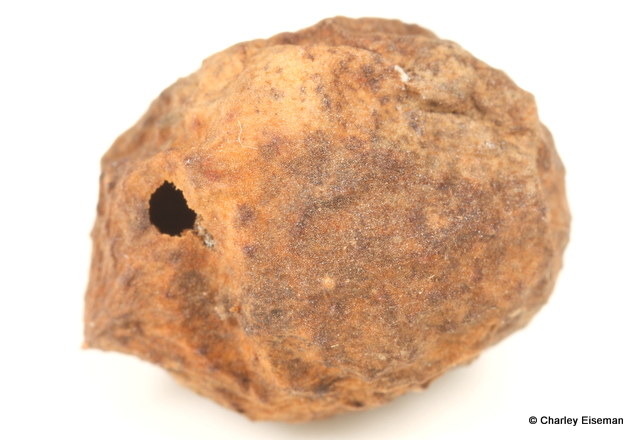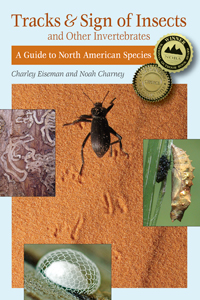As illustrated by my last post, I’ve resumed working my way through sorting my old photos and have now made it up to this past April. On April 18, a wasp emerged from a small “oak apple” gall I had collected last September on Nantucket.  In New England, it’s pretty safe to say an oak apple is the work of a species of Amphibolips (Cynipidae). The only Amphibolips recorded from Nantucket is A. quercusilicifoliae, which this is certainly not; that species makes large, long-beaked galls on scrub oak (Quercus ilicifolia). So getting the wasp that made this gall would automatically be adding a new species for the island, as well as helping me in my quest to get the oak apples sorted out… except, of course, the wasp that I got was not the gallmaker.
In New England, it’s pretty safe to say an oak apple is the work of a species of Amphibolips (Cynipidae). The only Amphibolips recorded from Nantucket is A. quercusilicifoliae, which this is certainly not; that species makes large, long-beaked galls on scrub oak (Quercus ilicifolia). So getting the wasp that made this gall would automatically be adding a new species for the island, as well as helping me in my quest to get the oak apples sorted out… except, of course, the wasp that I got was not the gallmaker.
It was, at 4.7 mm (plus 5.8-mm ovipositor) the largest torymid I’d ever seen. Unlike most chalcids, this is a bug you’d notice if it landed on you. I posted this photo to BugGuide.net, and ichneumon specialist Bob Carlson showed it to a torymid specialist friend of his, who said, “This is almost certainly Torymus tubicola (Osten Sacken). It’s one of the most widespread of all Torymus species.” I checked Johnson (1930)*, and this happens to be the only torymid species that has been documented on Nantucket (Johnson had it listed as Syntomaspis tubicola, family Callimomidae, but at least the species name was the same so it wasn’t too hard to decipher. Osten Sacken’s original name had been Callimome tubicola.) Which means that the other three torymids I’ve raised from galls collected on Nantucket will be new for the island’s list, once I get them identified.
Anyway, a few days later an equally large torymid emerged from a white oak bullet gall collected near my house. (I keep collecting these common galls, hoping to get a photo of Disholcaspis quercusglobulus, the cynipid that causes them, but so far I’ve just gotten a different parasitoid each time.)
I assumed it was going to be another Torymus tubicola, the extra blue tinge being some artifact of lighting, but in comparing it with the first wasp, I noticed the much larger dark spots on its wings and the red-tipped abdomen. So I posted this one to BugGuide too, and shortly Bob Carlson reported: “My torymid contact thinks it 100% sure that this is an undescribed species and among the most distinctive of Torymus species because of the large stigmal stain and the red tipped abdomen.” So this brings the number of new species I’ve found to… I’m not sure, but I’m going to start adding a “new species” tag to my blog posts to keep track of these things.
* Johnson, Charles Williston. 1930. A List of the Insect Fauna of Nantucket, Massachusetts. Publications of the Nantucket Maria Mitchell Association Vol III, No. 2.







Gorgeous little thing–holiday attire?
I have only recently subscribed to this blog, but am glad I did as it is fascinating, particularly the information on galls. This post is very interesting and informative. Thank you.
Cool find! A beautiful wasp and in seasonally appropriate colors too!
I find many of these insects very beautiful. Not by vertebra standards of beauty but they make us
so gross.
Happy Holidays, Charley, and thank you for your important work. Wendy
Now the hard part – getting somebody to actually describe these new species!
That’s the truth! I now have two species in the process of getting named, but I’m not holding my breath on the chalcids! I just confirmed that I have a second specimen of this torymid, so at least now I know the first one wasn’t just some kind of mutant, if there was any doubt.
Gorgeous!!! Great job Charley!
Pingback: Arizona Oak Galls, Part 5 | BugTracks